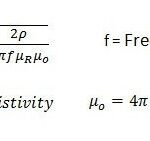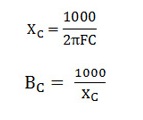What is a RACH Attempt in LTE?
In LTE, the Random Access Channel (RACH) is a critical mechanism used by the User Equipment (UE) to establish communication with the network, particularly when the device is trying to connect to the network for the first time or after it has been in idle mode. A RACH attempt refers to the process where the UE sends a random access preamble to the eNodeB (evolved NodeB) to initiate this connection.
Understanding the RACH Process
RACH is used by the UE to request resources from the eNodeB, such as when the UE wants to establish a new connection, re-establish a connection, or when it is transitioning from idle mode to active mode. The process involves several steps to ensure the successful communication between the UE and the eNodeB. Here’s how it works:
- Preamble Transmission: The UE randomly selects one of several preambles available in the random access procedure and transmits it to the eNodeB.
- Random Access Response: The eNodeB receives the preamble and responds by sending a Random Access Response (RAR), which includes timing adjustments and resource allocation information for the next step in the process.
- Connection Request: Once the RAR is received, the UE uses the information to send a connection request to the eNodeB, initiating the connection setup.
- Connection Setup: The eNodeB responds with the necessary configuration to complete the connection process.
What Does a RACH Attempt Indicate?
A RACH attempt is an indicator of the UE attempting to establish a connection with the LTE network. It can occur in various scenarios, such as:
- Initial Access: When a device is turned on or powered up, it uses RACH to access the network for the first time.
- Recovery from Idle Mode: When the device is in idle mode and needs to re-establish the connection, it uses RACH to connect to the network again.
- Handover Process: If the device is moving between cells and needs to re-establish the connection in a new cell, it may initiate a RACH attempt.
- Cell Re-selection: In situations where the device moves to a different frequency or a better cell, it may initiate RACH to connect to the new cell.
Challenges of RACH Attempts
While RACH is essential for network connectivity, there are some challenges related to RACH attempts:
- Network Congestion: In areas with high network traffic, many UEs attempting RACH at the same time can lead to congestion, resulting in failed attempts.
- Delayed Response: A delayed Random Access Response (RAR) can increase the time it takes for the UE to connect to the network, leading to slower connection speeds or delays.
- Interference: Interference from other devices or networks can reduce the effectiveness of the RACH process and lead to unsuccessful attempts.
How to Improve RACH Success Rate
To improve the chances of successful RACH attempts, several measures can be taken:
- Optimize Network Capacity: Increasing network capacity and resources in high-traffic areas helps reduce congestion and ensures that RACH attempts are processed smoothly.
- Reduce Interference: Minimizing interference from other devices and ensuring proper network configuration can improve the success rate of RACH attempts.
- Use Enhanced RACH Procedures: Advanced features such as enhanced RACH and better synchronization between the eNodeB and the UE can improve the efficiency of the random access procedure.
Conclusion
In LTE, a RACH attempt is a crucial process for establishing and maintaining communication between the UE and the eNodeB. While RACH is essential for accessing the network, issues such as congestion, interference, or delays can hinder successful attempts. Network optimization and advanced procedures are key to improving RACH success and ensuring smooth connections for all users.


